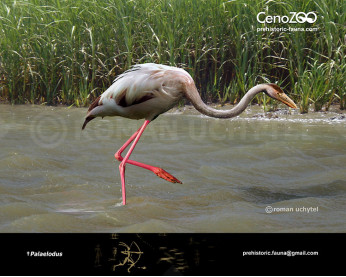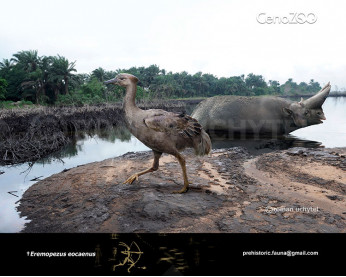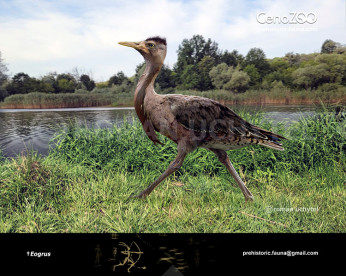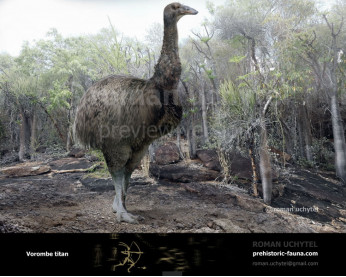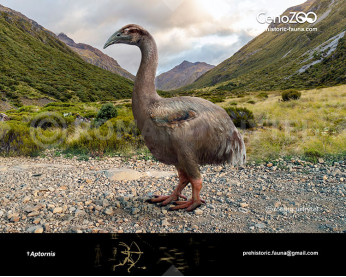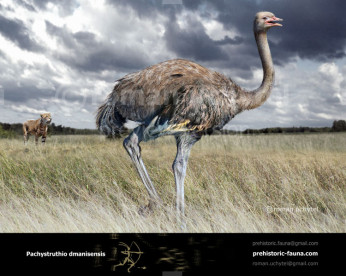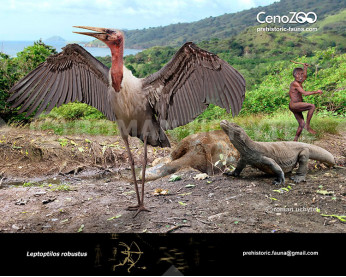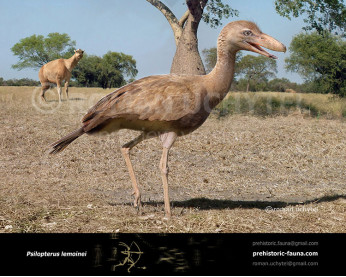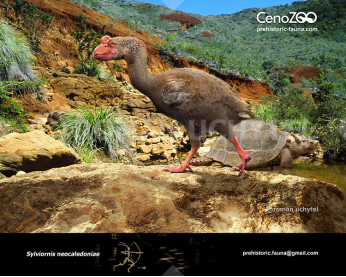Ergilornis
402402Ergilornis (†Eogruidae (Wetmore, 1934))
Class: Aves
Order: Struthioniformes
Family: †Eogruidae
Time period: from the Eocene to Pliocene epochs (Eurasia)
Size: more than 1,6 m in height, 35 - 80 kg of weight
Eogruidae (also spelled Eogruiidae in some publications) is a family of large, flightless birds that occurred across Eurasia from the Eocene to Pliocene epochs. Related to modern cranes, limpkins and trumpeters, these birds converged strongly with ostriches due to similar speciations to cursoriality, even reducing their number of toes to two in some taxa. It has been suggested that competition from true ostriches has caused the extinction of these birds, though this has never been formally tested and several ostrich taxa do occur in the late Cenozoic of Asia and some species do occur in areas where ostrich fossils have also been found.
Most eogruids are known from rather sparse remains, mostly the tarso-metatarsals and toes. The former are generally slender with a distinct crest along the lateral side of the plantar surface. The trochlea for the second toe shows a progressive reduction along the various taxa, culminating in its utter absence in Amphipelargus.
Eogruids are almost universally accepted to be Gruiformes within the crane-limpkin-trumpeter line, Gruoidea, the exception being Olson 1985 which declared them to be stem-ostriches. A study in 2021 based on newly described remains found that eogruids and the related Ergilornithidae are indeed members of Struthoniformes. More derived taxa such as Ergilornis and Amphipelargus were sometimes classified as a separate family, Ergilornithidae, but they are now generally accepted to be a subfamily within Eogruidae.
Eogruids are rather similar to Geranoididae, a clade of similar flightless gruiforms from North America and Europe, and both groups have occasionally been classified as sister taxa. Recently geranoidids have been recovered as basal to the rest of Gruoidea, however, while eogruids are sister-taxa to cranes.
Ergilornis (†Eogruidae (Wetmore, 1934))
Class: Aves
Order: Struthioniformes
Family: †Eogruidae
Time period: from the Eocene to Pliocene epochs (Eurasia)
Size: more than 1,6 m in height, 35 - 80 kg of weight
Eogruidae (also spelled Eogruiidae in some publications) is a family of large, flightless birds that occurred across Eurasia from the Eocene to Pliocene epochs. Related to modern cranes, limpkins and trumpeters, these birds converged strongly with ostriches due to similar speciations to cursoriality, even reducing their number of toes to two in some taxa. It has been suggested that competition from true ostriches has caused the extinction of these birds, though this has never been formally tested and several ostrich taxa do occur in the late Cenozoic of Asia and some species do occur in areas where ostrich fossils have also been found.
Most eogruids are known from rather sparse remains, mostly the tarso-metatarsals and toes. The former are generally slender with a distinct crest along the lateral side of the plantar surface. The trochlea for the second toe shows a progressive reduction along the various taxa, culminating in its utter absence in Amphipelargus.
Eogruids are almost universally accepted to be Gruiformes within the crane-limpkin-trumpeter line, Gruoidea, the exception being Olson 1985 which declared them to be stem-ostriches. A study in 2021 based on newly described remains found that eogruids and the related Ergilornithidae are indeed members of Struthoniformes. More derived taxa such as Ergilornis and Amphipelargus were sometimes classified as a separate family, Ergilornithidae, but they are now generally accepted to be a subfamily within Eogruidae.
Eogruids are rather similar to Geranoididae, a clade of similar flightless gruiforms from North America and Europe, and both groups have occasionally been classified as sister taxa. Recently geranoidids have been recovered as basal to the rest of Gruoidea, however, while eogruids are sister-taxa to cranes.

-797x638.jpg)
1-797x638.jpg)
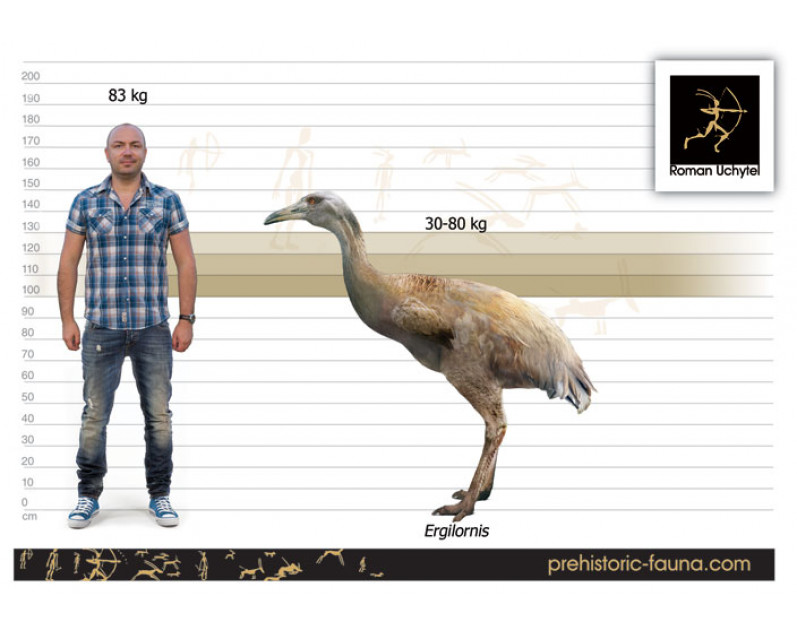
-70x56.jpg)
1-70x56.jpg)

